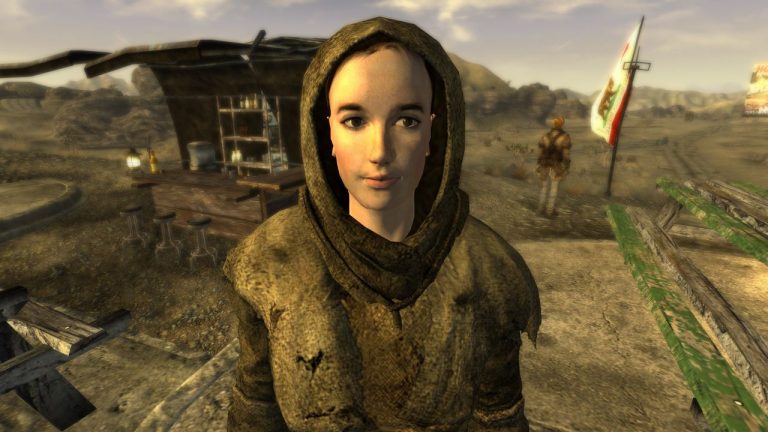Suppose you wake up to a world in which millions of jobs have disappeared overnight. Artificial intelligence isn’t just knocking—it’s kicking down workplace doors, replacing human workers with lightning-fast, error-free digital agents.
Millions will face career extinction, wondering how they’ll survive the tech tsunami. But what if you could become an AI adaptation master? This guide reveals the roadmap to not just survive, but thrive in the AI revolution.
We’ll show you exactly how to future-proof your career, transform technological threats into opportunities, and position yourself at the cutting edge of the most significant workforce transformation in human history.
Evolution of Computer Interaction
Technology transforms human-machine interactions. From manual switches to AI systems, our relationship with computers has dramatically changed.
Historical Phases of Human-Computer Input
Computer interaction began with manual switch flipping in the 1940s, allowing only 10 inputs per minute. The 1960s introduced keyboard commands, increasing input speed to 40 inputs per minute.
Graphic user interfaces in 1984 jumped to 200 inputs per minute, making computers more accessible. Touch screens in 2007 maintained similar input speeds, showing little advancement in human-computer interaction.
Limitations of Current Computer Interfaces
Existing computer interfaces create significant productivity barriers. Users must manually plan and execute digital tasks, breaking complex actions into multiple steps.
Input bandwidth remains severely constrained, forcing humans to navigate multiple screens and buttons.
These interfaces demand constant intervention, consuming mental energy that could be spent on more creative and strategic work.
Steve Jobs’ “Bicycle for the Mind” Concept
Steve Jobs viewed computers as tools that multiply human cognitive capabilities. Like bicycles dramatically enhancing human locomotion, computers automate tedious tasks, freeing mental resources for innovation.
They extend human potential by handling repetitive processes, enabling individuals to focus on complex problem-solving and strategic thinking. Computers are not just machines, but instruments of human intellectual empowerment.
AI Agents: The Four Developmental Stages
AI agents represent a technological revolution transforming human-computer interactions. Each stage brings us closer to intelligent systems that understand and anticipate human needs.
1. Text-Based AI Agents
Text-based AI agents enable users to create digital assistants without coding expertise. Platforms like OpenAI GPTs combine large language models with specialized tools, allowing complex task management.
These agents understand instructions, plan multiple steps, and interact with web applications to execute tasks efficiently.
Users can create custom agents that search, analyze, compare, and complete specific objectives across different digital environments.
2. Voice-Based AI Agents
Voice interfaces eliminate typing constraints, enabling natural language communication.
Advanced platforms allow the creation of personalized voice agents that interpret spoken commands and process requests across multiple digital systems.
These agents reduce interaction complexity by translating verbal instructions into precise actions. Users can communicate tasks conversationally, receiving immediate and accurate responses without manual navigation.
3. Brain-Computer Interfaces
Brain-computer interfaces represent cutting-edge thought-to-action technology.
Companies like Neuralink have demonstrated neural signal translation, allowing patients to control computers through mental commands. Initial human trials show remarkable potential for direct neural communication.
Future implementations suggest broader integration of neural technologies, potentially revolutionizing human interaction with digital systems through thought-based controls.
4. Predictive AI Agents
Predictive AI agents advance beyond reactive assistance to proactive support. These systems continuously monitor personal data, health indicators, and lifestyle patterns to generate anticipatory recommendations.
They can suggest personalized nutrition plans, schedule healthcare appointments, and optimize work-life balance.
By analyzing complex data streams, predictive agents become sophisticated personal assistants that address potential needs before users consciously recognize them.
Impact on Different Sectors
Technology transforms how humans work, communicate, and interact across personal and professional domains. AI agents represent a fundamental shift in technological engagement.
Personal Life Transformation
Smartphones will become obsolete, replaced by augmented reality glasses and AI companions. Users will experience digital interactions through sleek eyewear with built-in displays and speakers.
Artificial intelligence will handle complex tasks like scheduling, communication, and decision-making through voice commands or subtle gestures.
These AI companions will understand personal preferences, anticipate needs, and provide seamless support throughout daily activities.
Professional Landscape
Marketing and creative work will undergo a radical transformation. AI agents will generate comprehensive campaign strategies, analyze competitor data, and produce content within minutes.
Workflow automation will dramatically reduce manual tasks, enabling teams to focus on strategic thinking.
Human-AI collaborative teams will emerge, where artificial intelligence handles routine processes while humans provide creative direction, emotional intelligence, and complex decision-making.
Business Interactions
Communication between businesses will shift toward agent-to-agent interactions. Companies will develop AI systems capable of negotiating, comparing services, and making decisions based on specific organizational parameters.
Personalization will reach unprecedented levels, with AI systems remembering customer preferences, past interactions, and specific requirements.
Businesses will optimize their digital presence to be more accessible and responsive to AI agent interactions, fundamentally changing customer engagement strategies.
Strategies for Different Demographics
Technological disruption demands strategic adaptation across various professional and personal landscapes. Each demographic faces unique challenges and opportunities in the AI revolution.
Students/Young Adults
Young individuals must prioritize skill adaptation in the AI-driven job market. Learning AI automation becomes crucial for future employability.
Online platforms and self-directed learning offer extensive resources for understanding AI technologies.
Entrepreneurial opportunities emerge for those who master AI tools, with the potential to create innovative solutions or start AI-focused businesses.
Entrepreneurs
Emerging business opportunities center around AI service agencies, education platforms, and software development.
Entrepreneurs can help businesses transition to AI-integrated workflows by creating specialized automation services.
Education platforms teaching AI skills will become increasingly valuable. Software development focused on AI tools and agent systems presents significant market potential.
Office Workers
Office professionals must develop AI integration strategies to remain competitive. Role transformation involves becoming AI experts within their organizations.
Skill repositioning means focusing on tasks AI cannot easily replicate, such as complex decision-making, strategic planning, and relationship management.
Workers who learn to collaborate effectively with AI systems will have the greatest job security.
Manual Workers
Manual laborers should concentrate on robotics specialization and problem-solving skills. Understanding emerging technological trends in their industries becomes critical.
Workers can prepare by learning to work alongside robotic systems and developing technical skills for maintenance and operation.
Focusing on complex tasks and human interaction will help protect against potential job displacement.
Ethical and Societal Considerations of AI Technology
Artificial intelligence will dramatically transform workforce dynamics, displacing millions of jobs while creating new economic opportunities. Technological advancement blurs human-machine boundaries, suggesting the emergence of enhanced cognitive capabilities through brain-computer interfaces and AI integration.
Workforce transitions will demand adaptable skills and strategic preparation. Technological innovations may concentrate wealth among innovators, potentially increasing social inequality. Ethical frameworks must evolve to address complex challenges of human agency, privacy, and technological autonomy.
Responsible innovation requires careful navigation between extraordinary technological potential and fundamental human values, balancing unprecedented opportunities with moral considerations.
Tired of 9-5 Grind? This Program Could Be Turning Point For Your Financial FREEDOM.
This AI side hustle is specially curated for part-time hustlers and full-time entrepreneurs – you literally need PINTEREST + Canva + ChatGPT to make an extra $5K to $10K monthly with 4-6 hours of weekly work. It’s the most powerful system that’s working right now. This program comes with 3-months of 1:1 Support so there is almost 0.034% chances of failure! START YOUR JOURNEY NOW!
Media Credit: Liam Ottley












